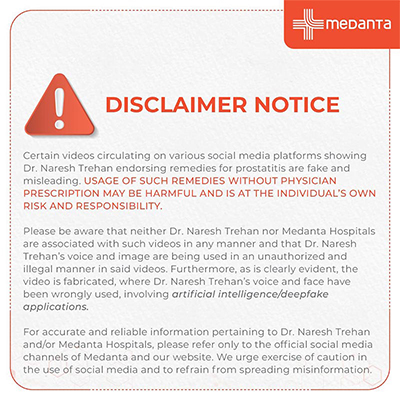Hydroureteronephrosis: Causes, Symptoms and Treatment

TABLE OF CONTENTS
Hydroureteronephrosis affects anyone, with a particularly high occurrence in individuals over 50 years of age. This condition causes the kidneys and ureters to swell due to a blockage in the urinary system, which can lead to serious complications if left untreated.
While the condition appears in various age groups, it shows a notable presence during pregnancy, affecting up to 80% of pregnant women during their second trimester. The impact of hydroureteronephrosis can range from mild discomfort to severe complications, with symptoms such as flank and abdominal pain.
This comprehensive guide explains what hydroureteronephrosis is, its symptoms, causes, and available treatments. Readers will also learn about the condition's effects on the urinary system and understand when to seek medical attention to prevent potential kidney damage.
Symptoms
The swelling of kidneys and ureters in hydroureteronephrosis often develops silently without noticeable signs. Many patients discover their condition through unrelated medical examinations rather than through symptoms. However, as the condition progresses, certain telltale signs may emerge that signal problems within the urinary system.
Pain is the most common symptom of hydroureteronephrosis. Patients typically experience sudden or intense discomfort in their sides, back, or abdomen that might extend to the lower stomach area or groin.
Urinary difficulties frequently accompany the condition, including painful urination, urgent need to urinate, or increased urination frequency.
Many patients report digestive disturbances, including nausea, vomiting, and loss of appetite as their condition develops. Furthermore, weight loss may become noticeable in adults with prolonged cases, whereas infants might show failure to thrive.
Some patients may experience blood in the urine, also known as hematuria, which indicates potential damage to the urinary tract structures.
Fever often accompanies hydroureteronephrosis, especially when infection develops in the trapped urine.
Importantly, people with this condition face an elevated risk of developing urinary tract infections (UTIs). The stagnant urine creates an ideal environment for bacterial growth.
Causes
The underlying causes of hydroureteronephrosis generally involve either blockages in the urinary tract or disruptions to its normal function.
These include:
Kidney stones: Renal stones are among the most common causes of kidney stones in adults. These hard mineral deposits can lodge anywhere in the urinary tract, blocking urine flow.
Tumour: Tumours affecting the bladder, prostate, uterus, or nearby organs may exert pressure on urinary structures, preventing normal drainage.
Benign prostatic hyperplasia (BPH): Men frequently develop hydroureteronephrosis because of BPH, a non-cancerous enlargement of the prostate gland that compresses the urethra. This pressure prevents complete bladder emptying and potentially forces urine backwards into the kidneys.
Narrowing of the urinary tract passage: This narrowing might result from injury, infection, surgical complications, or congenital conditions.
Medical conditions:
Nerve or muscle problems affecting kidney or ureter function can interfere with proper urine flow, leading to accumulation and swelling.
A particularly noteworthy condition called vesicoureteral reflux allows urine to flow backwards from the bladder to the kidneys. This abnormal movement occurs when the valve between these structures fails to function correctly.
Ureterocele—a condition in which the lower part of the ureter protrudes into the bladder—can disrupt normal urine drainage.
Pregnancy: For women, pregnancy commonly triggers temporary hydroureteronephrosis as the expanding uterus places pressure on the ureters. Generally, this resolves after childbirth without lasting effects. Other female-specific causes include uterine prolapse (sagging of the uterus from its normal position) and cystocele (bladder dropping into the vagina due to weakened supporting tissues).
In babies, hydroureteronephrosis often appears during prenatal ultrasound examinations. This antenatal hydroureteronephrosis may result from:
Increased urine production by the foetus
Blockages in the developing urinary tract
Backward flow of urine from the bladder to the kidneys
Interestingly, many cases of hydroureteronephrosis in infants resolve spontaneously without treatment, either before birth or within the first few months of life. This phenomenon, called transient dilatation, occurs partly because pregnancy hormones relax the ureters. However, babies with this condition may require antibiotics to prevent kidney infections while waiting for natural resolution.
Diagnosis and Tests
Doctors diagnose hydroureteronephrosis through a combination of physical examinations, laboratory tests, and imaging procedures.
Physical examination: Doctors check for tenderness or swelling near the kidneys and bladder while discussing symptoms. Men may require a rectal examination to check for prostate enlargement, while women might need a pelvic exam to assess their uterus and ovaries.
Laboratory tests:
Blood analysis: Blood tests help evaluate kidney function through measurements including creatinine, estimated glomerular filtration rate (eGFR), and blood urea nitrogen (BUN). A complete blood count helps identify signs of infection. These blood markers provide crucial information about how well the kidneys function despite swelling.
Urine tests: Doctors analyse urine samples to detect:
Blood (which might indicate kidney stones)
Stone crystals (suggesting urolithiasis)
Bacteria or signs of infection
Other abnormalities
Imaging:
Imaging tests provide the clearest evidence of hydroureteronephrosis. Ultrasound provides detailed pictures of the kidneys and urinary tract and clearly shows the dilated renal collecting system characteristic of hydroureteronephrosis.
Additional imaging tests:
CT scan: Creates three-dimensional images of the urinary tract, which is especially helpful for detecting kidney stones, tumours, or other obstructions. A special type called CT urogram uses contrast dye to outline the kidneys, ureters, bladder, and urethra, capturing images before and after urination.
Intravenous urography - Highlights urine flow through the urinary tract, making blockages visible.
MRI - Provides detailed soft tissue images without radiation, sometimes used as an alternative to CT scans.
Diuretic renography - Assess how well urine drains from the kidneys.
Interestingly, hydroureteronephrosis can often be detected before birth. Doctors frequently identify the condition during routine pregnancy ultrasound scans, typically around 20 weeks gestation. This antenatal hydroureteronephrosis appears as renal pelvic dilation of 4 mm or more on ultrasound. Upon detection, pregnant women usually require additional scans throughout their pregnancy to monitor the baby's kidney development.
The diagnostic approach for hydroureteronephrosis combines multiple assessment methods to confirm the condition, identify its cause, determine its severity, and guide treatment decisions.
Management and Treatment
Treatment for hydroureteronephrosis focuses on restoring normal urine flow, reducing kidney swelling, and preventing permanent damage. The treatment approach varies based on the underlying cause, severity of symptoms, & overall health of the patient.
Treatment options are:
Watchful monitoring: Doctors might recommend a "wait and see" approach for mild cases of hydroureteronephrosis. Indeed, some conditions causing hydroureteronephrosis, such as pregnancy-related pressure on the ureters or small kidney stones, often resolve without medical intervention.
Pain management: Doctors typically prescribe medications to help control discomfort while the underlying cause is addressed.
Antibiotics: Doctors prescribe antibiotics when an infection develops within the blocked urinary system.
Drainage Procedures: Draining excess urine from the swollen kidney stands as an immediate priority, particularly in severe cases. Doctors achieve this through several methods:
Urinary catheterisation - A thin tube inserted into the bladder through the urethra or sometimes directly through the abdomen
Ureteral stents - Soft plastic tubes placed inside the ureters to hold them open and allow urine to flow properly
Nephrostomy tubes - Devices inserted through the skin directly into the kidney to drain urine when stents cannot be placed
These drainage methods provide immediate relief from pressure and prevent further kidney damage whilst doctors prepare for definitive treatment of the underlying cause.
Surgical and Procedural Interventions
Surgical treatment becomes necessary when the permanent resolution of hydroureteronephrosis requires removing a blockage or correcting a structural problem.
Pyeloplasty: Repairs blockages at the junction where the kidney meets the ureter.
Kidney stone removal: For kidney stones causing hydroureteronephrosis, several treatment options exist:
Shock wave lithotripsy
Ureteroscopy
Surgical removal
Tumours, scar tissue, or enlarged prostates blocking urine flow may require specific surgical procedures to relieve the obstruction.
Special Considerations
Pregnant women with hydroureteronephrosis usually don't require treatment beyond pain management and monitoring, as the condition typically resolves within weeks after delivery. Catheters can drain urine regularly until then, with antibiotics prescribed if infection develops.
For babies with antenatal hydroureteronephrosis (detected before birth), most cases resolve spontaneously either before birth or within the first 18 months of life. Babies with this condition undergo regular ultrasound monitoring to track kidney development.
Bilateral hydroureteronephrosis (affecting both sides) requires careful management as it often indicates obstruction below the bladder level.
Overall, early intervention for hydroureteronephrosis helps prevent lasting kidney damage. The specific approach depends on identifying and addressing the root cause whilst supporting kidney function throughout treatment.
Prevention
Preventing hydroureteronephrosis involves understanding and managing its risk factors. Managing underlying conditions and avoiding causes that lead to urinary blockages remain crucial in reducing the likelihood of developing kidney and ureter swelling.
Recognising Risk Factors
Identifying your risk factors helps you take appropriate preventive measures. People with certain conditions face higher risks of developing hydroureteronephrosis:
Kidney stones
History of cancer in the urinary tract
Past surgeries on the urinary tract
Previous urinary tract infections
Blood clots
Enlarged prostate
Pregnancy (due to uterus pressure on the pelvis)
Awareness of these risk factors allows you to work with healthcare providers to anticipate and address potential problems before they worsen.
Staying Hydrated
Proper hydration plays a significant role in preventing hydroureteronephrosis, primarily through reducing kidney stone formation. Aim to drink at least eight glasses of water daily to dilute urine and flush out bacteria from your urinary system. This simple habit helps prevent urinary tract infections and kidney stones, both common causes of hydroureteronephrosis.
Dietary Adjustments
Making dietary changes can significantly reduce your risk of developing kidney stones, a major cause of hydroureteronephrosis. People who follow a mostly plant-based diet, low in dairy products and meat, typically experience fewer kidney stones. Consider incorporating these foods into your diet:
Fresh vegetables and fruits
Magnesium and potassium-rich foods (leafy greens, bananas, avocados)
Foods rich in vitamin E (berries, olive oil, almonds)
Alkaline foods (lemon juice, apple cider vinegar, green vegetables)
Sprouted grains instead of refined grain products
Simultaneously, limit foods naturally high in oxalic acid, such as spinach and certain nuts, as these may contribute to stone formation.
Managing Prostate Health
For men, maintaining prostate health forms an essential prevention strategy. Regular prostate check-ups, especially after age 50, help detect and treat benign prostatic hyperplasia (BPH) before it causes urinary blockage.
Seeking Timely Medical Care
Early intervention can prevent hydroureteronephrosis from developing or worsening.
Special Considerations During Pregnancy
Pregnant women should attend all scheduled prenatal appointments to monitor kidney health. Though pregnancy-related hydroureteronephrosis typically resolves after delivery, proper prenatal care ensures the timely detection of complications.
Prevention Education for Patients
Patients with recurring kidney stones benefit from education about dietary changes to prevent stone formation. A dietician can provide valuable guidance for these patients.
Preventing UTIs
Following these practices may help prevent urinary tract infections, which can contribute to hydroureteronephrosis:
Practise proper hygiene, including wiping from front to back
Urinate shortly after sexual activity
Wear loose-fitting clothing and cotton underwear
Avoid holding urine for extended periods
Empty your bladder completely when urinating
While congenital causes of hydroureteronephrosis cannot be prevented, taking these preventive measures can significantly lower your risk of developing this condition from other causes. Regular check-ups with doctors, particularly for those with risk factors, enable early detection and intervention before complications arise.
Outlook / Prognosis
The long-term outlook for patients with hydroureteronephrosis varies considerably depending on several crucial factors. Understanding what to expect helps patients manage their condition effectively and maintain their kidney health.
Most cases of hydroureteronephrosis are mild to moderate and don't cause serious health problems. The prognosis is typically excellent for mild cases. Mild hydroureteronephrosis sometimes resolves completely without medical intervention. These spontaneous improvements often occur when the underlying cause is temporary, such as pregnancy-related pressure on the urinary tract.
Severe or untreated hydroureteronephrosis presents greater risks. Without timely treatment, some people develop lasting kidney damage. Even more concerning, though quite rare, the condition can cause an affected kidney to lose its filtering ability entirely—a situation known as kidney failure.
The recovery outlook hinges primarily on:
Duration of the obstruction
The severity of the blockage
Prompt treatment response
Underlying cause
Overall kidney health before diagnosis
The longer hydroureteronephrosis persists, the greater the risk of permanent damage. Prolonged obstruction leads to tubular atrophy and interstitial fibrosis—irreversible changes in kidney tissue. Hence, early intervention remains vital for preserving kidney function.
Pregnancy-related hydroureteronephrosis typically resolves within weeks of giving birth without requiring specific treatment. Throughout pregnancy, doctors often use catheters to drain urine from the kidneys, alongside painkillers and antibiotics if needed.
The prognosis is remarkably good for babies diagnosed before birth. Most infants with antenatal hydroureteronephrosis (ANH) need no treatment whatsoever, as the condition improves either before birth or within a few months afterwards. There's usually no risk to the mother or child, so early labour induction isn't necessary. As an added precaution, doctors might prescribe antibiotics to diminish the chance of urinary tract infections until scans confirm the condition has resolved.
For chronic cases, regular monitoring remains essential. Long-standing hydroureteronephrosis may be associated with obstructive nephropathy and renal failure. Patients with complete or severe partial bilateral obstruction face higher risks of developing acute kidney injury or chronic kidney disease.
Most patients with hydroureteronephrosis can expect good outcomes through appropriate treatment and management. Every case differs based on individual circumstances, yet with proper medical care, even severe cases can be managed effectively to minimise long-term consequences.
Living With Hydroureteronephrosis
Daily life with hydroureteronephrosis requires careful attention to symptoms and ongoing communication with doctors. Most patients can maintain a normal lifestyle once proper treatment begins, as many cases respond well to medical interventions with no lasting complications.
Managing this condition means establishing a partnership with your doctor. Ask questions about how hydroureteronephrosis might affect your daily activities and what lifestyle adjustments might improve your comfort. Your doctor can provide personalised guidance on recovery timelines and symptom management strategies specific to your situation.
Recognising warning signs remains essential throughout your recovery journey. Contact your doctor immediately if you experience:
Sudden or intense pain in the side or back
Vomiting
Changes in urination patterns (frequency, pain, or blood)
Fever above 38°C (100.5°F)
Living with bilateral hydroureteronephrosis (affecting both kidneys) requires extra vigilance compared to cases involving just one kidney. Still, even with unilateral cases, paying attention to your body's signals helps prevent complications.
Long-term monitoring plays a vital role in successful management. Untreated or severe hydroureteronephrosis might lead to urinary tract infections, kidney damage or, in rare instances, kidney failure.
Through diligent self-care plus professional medical support, most people with hydroureteronephrosis maintain a good quality of life and prevent serious complications.
Conclusion
Hydroureteronephrosis remains a manageable condition when detected and treated early. Though symptoms can be concerning, most patients experience positive outcomes through proper medical care and lifestyle adjustments. Regular monitoring helps prevent complications while following prescribed treatments reduces the risk of permanent kidney damage.
Medical advances provide various treatment options suited to each patient's specific situation. Patients should maintain open communication with their medical team and pay attention to warning signs. Additionally, lifestyle modifications like proper hydration and dietary changes play crucial roles in preventing recurrence. Overall, understanding hydroureteronephrosis empowers patients to take control of their health and work effectively with doctors to manage the condition successfully.
FAQs
What are the common causes of hydroureteronephrosis?
Common causes include kidney stones, enlarged prostate, tumours, pregnancy, and congenital abnormalities. Kidney stones and benign prostatic hyperplasia in men are particularly frequent triggers.
How is hydroureteronephrosis typically treated?
Hydroureteronephrosis treatment depends on the underlying cause and severity. Options range from monitoring and pain management to drainage procedures like catheterisation or stent placement. Surgery may sometimes be necessary to remove blockages or correct structural issues.
Can hydroureteronephrosis resolve on its own?
In mild cases, particularly those related to pregnancy or small kidney stones, hydroureteronephrosis may resolve without medical intervention. However, regular monitoring is essential to ensure the condition doesn't worsen.
What lifestyle changes can help manage hydroureteronephrosis?
Staying well-hydrated, maintaining a diet low in oxalates, and promptly treating urinary tract infections can help manage the condition. Regular check-ups and following your doctor's advice are also essential.
What is the long-term outlook for patients with hydroureteronephrosis?
The prognosis is generally good, especially when diagnosed and treated early. With proper management, most patients can maintain normal kidney function. However, severe or untreated cases may lead to complications, including permanent kidney damage in rare instances.






